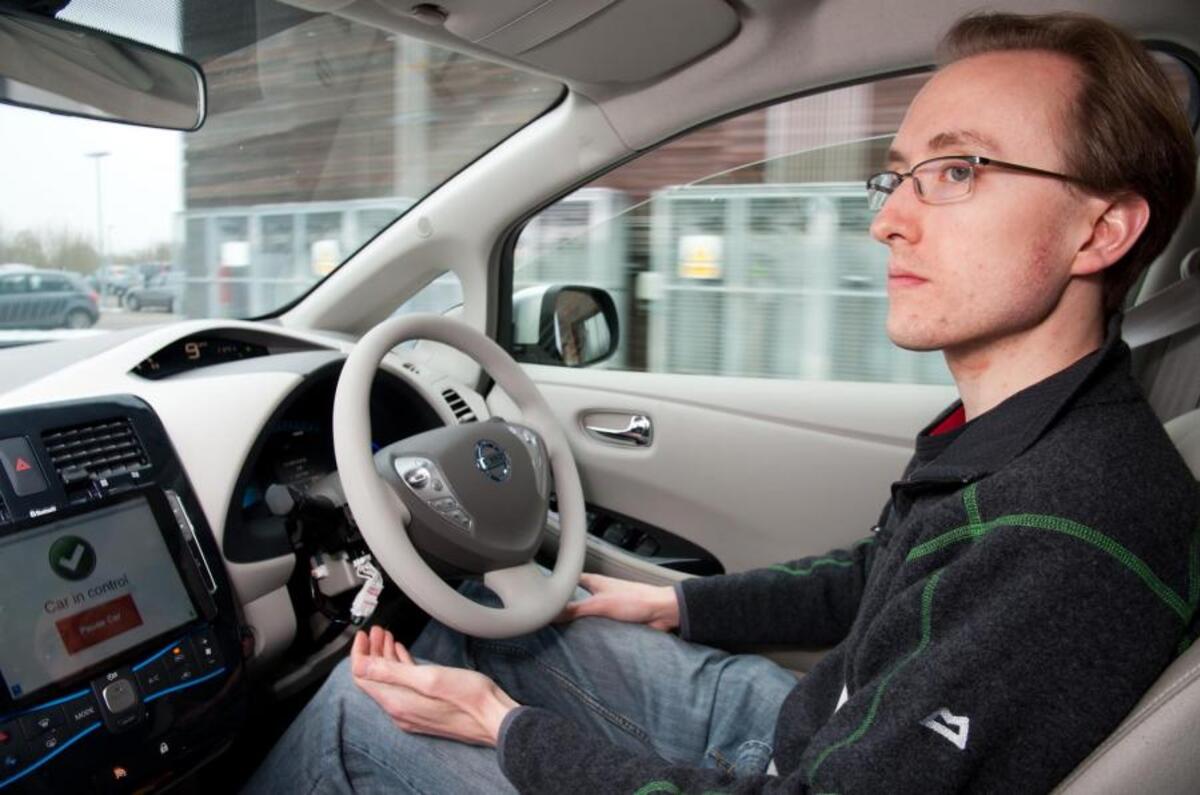Ingrained attitudes of motorists will be harder to overcome than the technical challenges of creating autonomous and connected cars, according to Tim Armitage who heads up a government and industry-backed £20m initiative into the technology.
The initiative - called Autodrive - is co-ordinating efforts from firms including Jaguar Land Rover (JLR), Tata and Ford, plus research organisations including the universities of Oxford and Cambridge. By 2018 it has pledged to have a small fleet of fully autonomous cars on 41 miles of the roads of its partner cities Coventry and Milton Keynes.
UK driverless pod trial is first in public space
“The technology is evolving, and step-by-step a clearer path to autonomous and connected cars is evolving,” said Armitage. “However, while it’s easier to understand how a world with all autonomous and digital cars could work, and the road safety benefits from that, the path to that position is less easy to understand.
“That’s why Autodrive’s work will include some attitudinal surveys - we want to measure public perception and plot how it changes. Today it isn’t even clear what autonomous means and there are clearly challenges ahead - one death in a self-driving car has already generated more headlines than hundreds that occur every day on our roads. Changing public and press perceptions is going to be a huge challenge.”
Britain to host Europe's first autonomous track day
Armitage’s comments were made during a demonstration event at the MIRA proving ground where systems were shown that communicate with traffic lights to advise the driver, or the car, which speed to travel at to minimise the number of red lights the car must wait at. Ford claims the average daily driver spends two days per year waiting at traffic lights.
Jaguar Land Rover’s technologies include semi-autonomous systems, such as Advanced Highway Assist – a system that allows hands-free and pedal-free driving while the car is able to overtake vehicles safely and automatically on the motorway.
Another system showcased was Electronic Emergency Brake Light Assist, which is an extension of autonomous emergency braking. The system warns the driver of any heavy braking performed by the car in front. This is especially useful when driving in fog or at any other time when the car in front, for whatever reason, is hard to see. The system can detect other cars at a distance of up to 500 metres.





Join the debate
Add your comment
A reality check is looming
There's no doubt self-drive cars will become common if not the norm on motorways within a decade. And very limited urban areas.
But the technology is incredibly unlikely to be of any use or interest to millions of drivers whose entire daily driving lives are spent in the suburbs, small towns or the countryside.
And there will be a sobering reality check the first time the technology is seen to result in the death of a child, or an innocent cyclist or pedestrian.
Not just that, but in animal-loving countries like the UK, there will be a tsunami of bad publicity when it becomes apparent that - for perfectly understandable reasons of prioritising the safety of car occupants - the technology won't swerve to avoid wildlife like hedgehogs.
I feel a little like the small boy watching the procession of the fabled Emperor on this.... he IS wearing some clothes, but is not nearly as fully-dressed as the motor industry is claiming.
It could be good here in
A good point.
More complex than mere technical issues
spqr wrote:
I have been posting on this site and others for quite some time now about exactly the scenario you describe. Control of the free movement of the people. It is one of the main leftie ideals. Autonomous cars are central to their achieving it, as are electric cars, which restrict the ability to easily travel long distances in the manner to which we have become accustomed.
If we stand by and allow these despicable contraptions to be adopted as the norm we will be putting our own neck into the yoke of slavery.